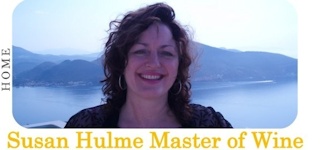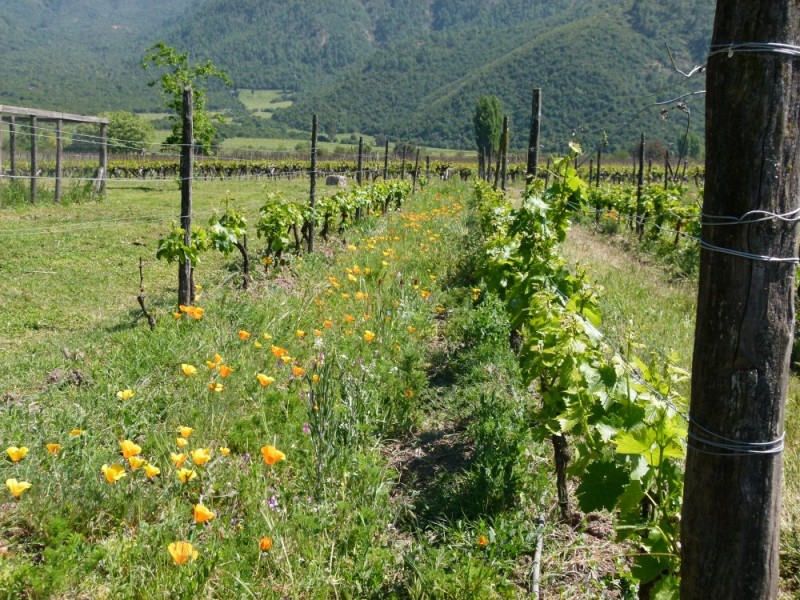Alvaro Espinoza has quite a pedigree in winemaking, having studied oenology at Santiago and Bordeaux universities as well as gaining experience at Château Margaux in Bordeaux and Fetzer’s Bonterra vineyards in California. Yet even so, when Alvaro first became interested in organic viticulture in the early 1990s, he was warned against following his instincts at the expense of ruining his career. Organic viticulture in Chile was still regarded as somewhat on the lunatic fringe. Nevertheless, he decided to ignore the warning, as organic and biodynamic viticulture was something close to his heart and an almost spiritual belief for him. By 1998 these beliefs were taken more seriously. In 2001, the company Alvaro works for, Viñedos Orgánicos Emiliana (VOE), part of the Concho y Toro group, made its first vintage of organically produced wine.
They have three organic and biodynamic vineyards, one in Casablanca, one in Maipo and the other in their centre of biodynamic preparation at ‘Los Robles’ in the Colchagua Valley. Interestingly, Casablanca is not just doing well for its white varieties but showing some promising developments with Syrah and Merlot grown under cooler conditions. Alvaro says they are the only biodynamic producers in Chile so they have to make all their own biodynamic preparations, but he believes that making your own preparations is true biodynamics, because it comes from the place itself. As well as preparations, true biodynamics needs the energy of animals, and weeds are controlled by freeroaming alpacas and geese. VOE is certified by Demeter for biodynamics and a Swiss organisation called IMO for organics. By 2007 they will have almost 500 hectares of organic and biodynamic vineyards.
Organics according to Alvaro
So what are the main tenets of organic viticulture according to Alvaro? First, is to promote biodiversity, minimising monocultures in order to get a healthier, more stable environment. It is very important to have healthy, resistant plants. Conventional viticulture, with its reliance on the addition of artificial nitrogen fertiliser, leads to excessive growth, more shading and thinner, less resistant plant tissues that are more susceptible to viruses. Interestingly, in conversation at the seminar with someone who knows Chile well, we discussed the fact that there is a huge nematode problem in Casablanca which is making producers consider planting on rootstocks. Yet, when I asked Alvaro about this, he said nematodes were not a problem if you have healthy vines. The friend confirmed that when you see Alvaro’s vineyard in Casablanca it stands out because it is lush and green amongst other vineyards that look brown and highly stressed. Alvaro also added that planting grafted vines as opposed to ungrafted can increase costs by five times. Another important factor is the microbiological activity of the soil. Alvaro comments that microbes transport nutrients to the vine. The vine cannot absorb minerals by osmosis as there is an inverse proportion in the plant. Thus the second most important tenet is the use of compost. This encourages bacteria which feed on the vine’s roots and transmit minerals from the soil in return.
Conventional agriculture also heavily promotes the use of clones, but Alvaro feels this is leading to less diversity and more standardisation. If they do use clones, they prefer to use a pool of clones to prevent homogeneity. Furthermore, conventional techniques of control by fertigation are making soil less important. It is almost as if vines are being grown in a hydroponic situation. In fact, conventional viticulture is making it difficult to talk about terroir at all. Climate is the only point of difference in these situations.
The vital forces of life
Biodynamic viticulture, on the other hand, he describes as a science that studies the vital forces of life. Biodynamics is an attempt to give more vitality and energy to the plants so they will be more alive. It uses herbal preparations from plants such as nettle, yarrow, camomile and valerian, I like to think of it as homeopathy for the vines. Let’s remember how just a short time ago homeopathy was considered a somewhat weird practice, whereas now there are even homeopathic vets. However, biodynamics is also being aware of the cosmic influence of the moon and other planets. Alvaro and his team get a better response from the vines when they work with these cosmic forces. These are not new ideas; farmers have always known and worked with this, as for example castrating bulls on a waning moon, to help stem the blood loss. They are rediscovering traditions in some cases. If we consider how the sun influences our planet and the influence of the moon on the tides, then it makes sense that the moon should influence other things.
A man on a mission
Asked about the additional costs for organic and biodynamic cultivation, Alvaro felt that, in Chile, the former increased costs by 20% and the latter by between 40% to 50%. He says he owes a lot of thanks to José Guilisasti, agricultural director of VOE who argues the case forcefully for him among Concho y Toro’s board of directors. One can just imagine the sceptical reaction of a hard-nosed, business-driven group of directors when asked for more money to buy a herd of llamas! This was a brilliant seminar for me, because it was technically detailed, had some excellent wines to taste and was given by a man with such enthusiasm and energy, and an almost spiritual belief, my favourite qualities. Alvaro talks about what he’s doing as having a holistic and spiritual approach. He is on a mission and that mission is spiritual agriculture.
Tasting up the right path?
There followed a tasting of some wonderful wines. We tasted among others, the Novas Sauvignon Blanc 2004, very intense on both nose and palate with the grapefruit and lemon sherbet flavours that for me characterize Chilean Sauvignons, but this wine had more intensity and concentration than most. This was followed by Adobe Chardonnay 2004 and Novas Chardonnay 2004, but my favourite white was the Novas ‘Winemakers Selection’, a blend of Chardonnay, Viognier and Marsanne. It had a lovely delicate peach, lime blossom nose, followed by a creamy, fragrant, yet fresh palate.
The reds started with Adobe Carmenère 2003 and Cabernet Sauvignon 2003. There followed an enjoyable trio of Novas red blends, but for me the two Coyam vintages 2002 and 2003, also blends, stole the show. Both Coyam wines showed very finely textured, silky tannins, had great concentration and richness without being one-dimensional. These were wonderful wines and at £9.99 tasted at least three times the price.
We were also given a privileged look at Alvaro’s own wine Antiyal (only 500 cases and a blend of Carmenère, Cabernet Sauvignon and Syrah, available at Adnams), made in his garage so a genuine ‘garagiste’ wine. This was more delicate and mid-weight than Coyam, but with a sweet, fragile quality to the fruit that reminded me of some of the better wines from the Graves. Not only does spiritual viticulture seem like the right path to follow, but if these wines are the result, the sooner we become more spiritual the better.
© 2005 – 2012, Susan Hulme MW. All rights reserved.

